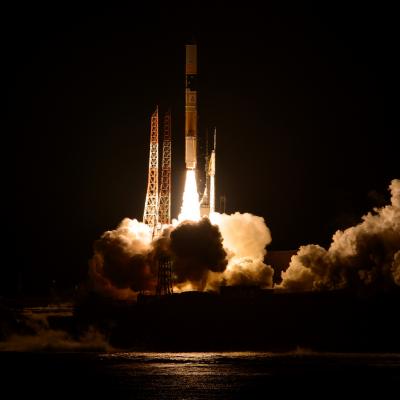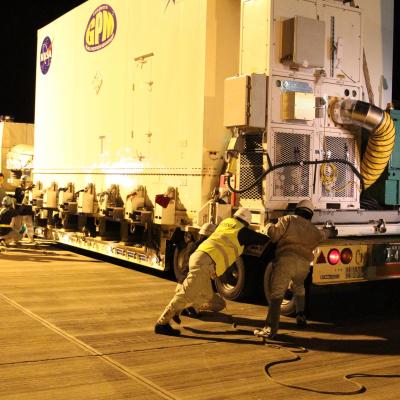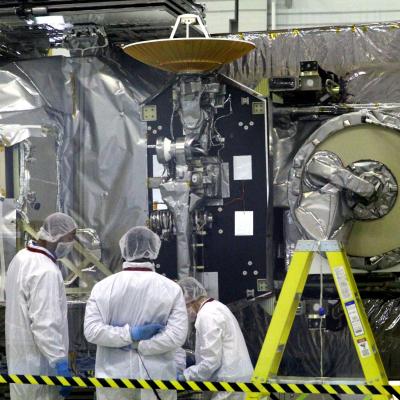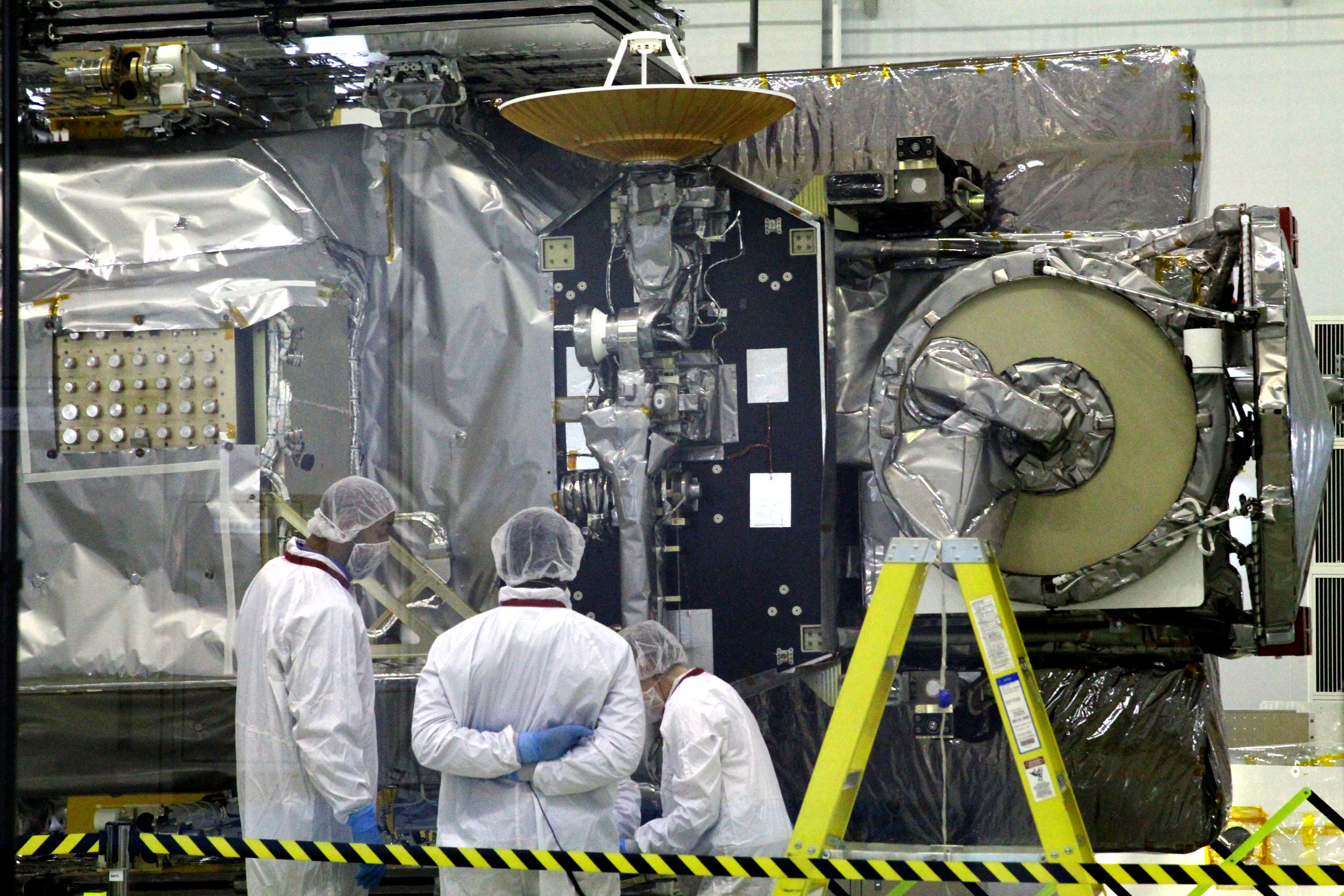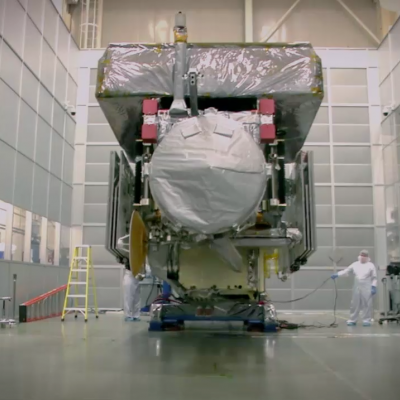GPM's Launch Vehicle Arrives at Tanegashima Space Center
The launch vehicle for the Global Precipitation Measurement, or GPM, mission's Core Observatory arrived at Tanegashima Space Center, Japan, in the pre-dawn hours of Tuesday, Jan. 21, local time. The Japanese H-IIA rocket, No. 23, has two stages that arrived by cargo freighter the previous evening. They were then trucked across the island in the middle of the night when no cars were on the road. Both stages of the Japanese H-IIA rocket arrived at Tanegashima Island, Japan on Jan. 20, 2014. Above, the first stage in its shipping container is lifted off of the cargo freighter. It and the upper


